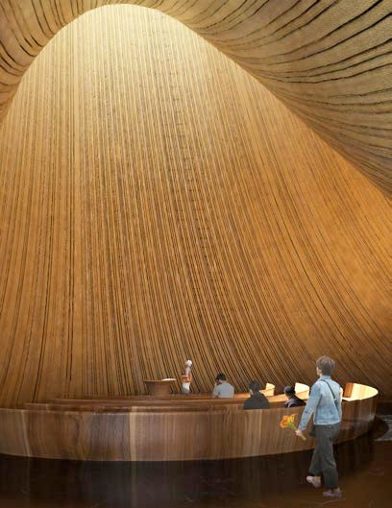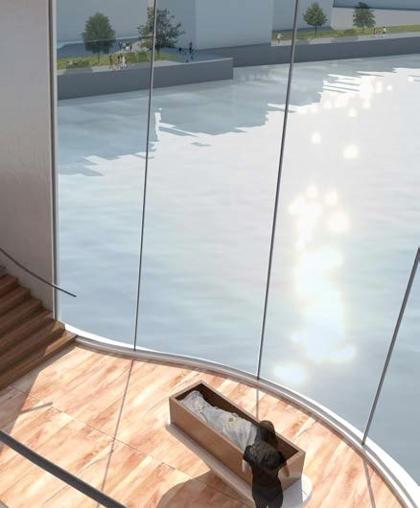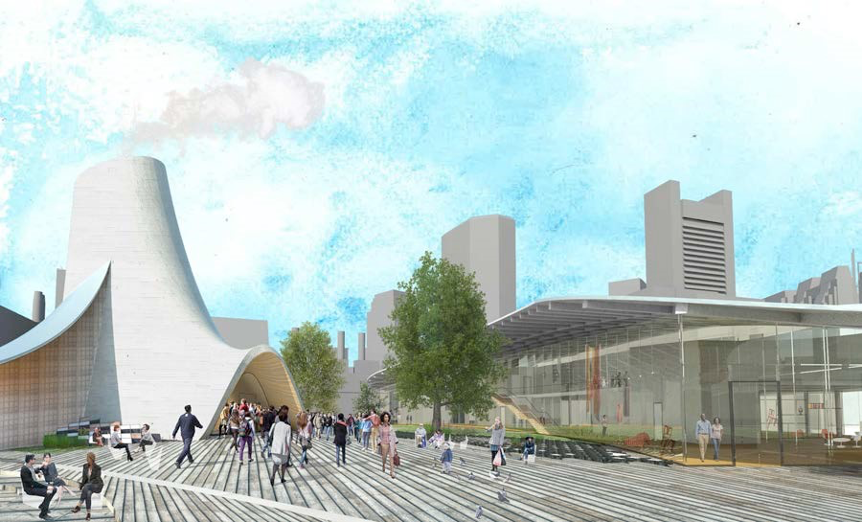Lucca Townsend
The Boston Architectural College Luccatownsend@gmail.com
This thesis rethinks the modern cemetery as a Memento Mori at the scale of the city: an everyday reminder of life’s transience amidst the usual urban distractions. The project seeks to remedy an avoidance of death plaguing our modern culture. Shifting this relationship with mortality begins with our spaces of death. An integration of architecture, landscape, and urban design, through materiality, can help people find spirituality in the city. A new typology, the cemetery draws inspiration from a history of burial, cultural rituals, and shifts in contemporary spirituality.
The cemetery is sited in downtown Boston, spanning the Fort Point Channel. The design manifests as a bridge constructed of human remains (figure 1); ashes are cast into concrete tiles that constitute the surface (figure 2). Rather than “going back to the earth,” here, remains “go back to the city.” Loved ones can imprint, embed, or mark the concrete. Material becomes monumental, and remains become mundane.
Program including a chapel (figure 3), viewing room (figure 4), library, and event space, are designed to orient the visitor upward toward the sky, downward toward water and reflection, or outward toward the city and collective society. The cemetery becomes a landscape of memory. It acts as a street, park, and public space (figure 5), connecting citizen to city. It is an ever changing creation of the community; growing with the area around it, and as memories are made and left there.


Figure 1: Axonometric View of Cemetery Figure 2: Diagram of Graves and Span


Figure 3: Chapel Figure 4: Viewing

Figure 5: Plaza, chapel on the left, library on the right

Figure 6: Section through plaza, library and event space (left), chapel and viewing (right).
References
Philippe Aries, Western Attitudes toward Death: From the Middle Ages to the Present. (Baltimore: John Hopkins UP, 1974)
Julie Beck, “What Good is Thinking about Death.” The Atlantic. May 28, 2015.
Ana Naomi De Sousa “Death in the City: what happens when our cemeteries are full?” The Guardian. January 21, 2015.
Farah Halime, “Avante-Garde Afterlife: Space Shortage Inspires New Burial Ideas.” National Public Radio. December 13, 2014
Michel Foucault, “Of Other Spaces.” Diacritics 16 (Spring 1986), 22-27.
Alison Killing, “There’s a Better Way to Die, and Architecture Can Help.” Presented at TedTalks, Vancouver Canada, October 2014)
Alli Magidsohn, “Graves That Save: The rise of the sustainable death movement.” Good Magazine. December 22, 2013.
Jessica Mitford, The American Way of Death Revisited (New York: Alfred A. Knopf, 1998)
Juhani Pallasmaa, “The Space of Time.” Oz v.20 (1998), 54-57
Aldo Rossi and Peter Eisenman, The Architecture of the City. (Cambridge, MA: MIT Press, 1982)
Bernard Tschumi, Architecture and Disjunction. (Cambridge, MA: MIT Press, 1994)



